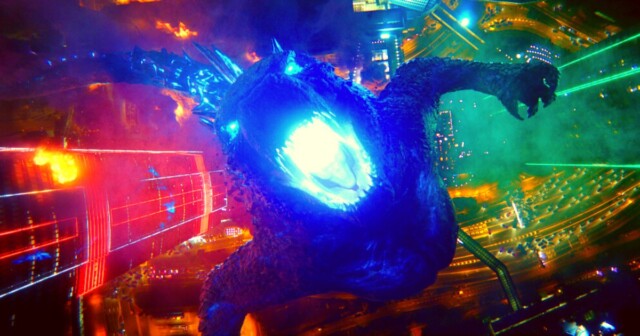Review: Netflix’s ‘Gamera: Rebirth’
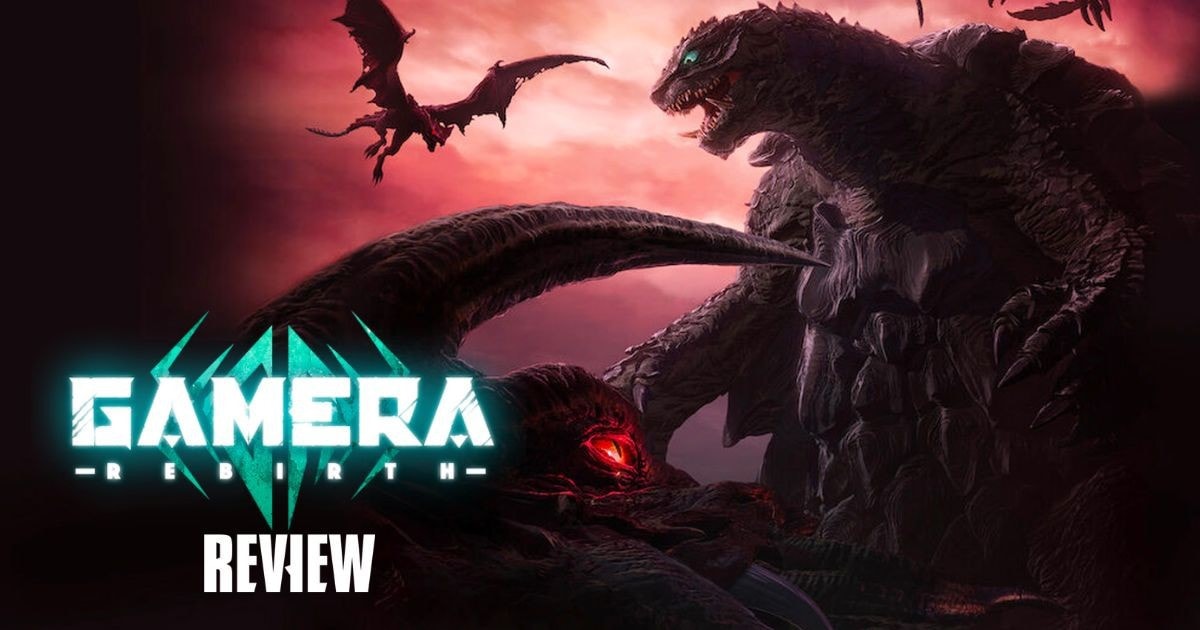
Thanks to the recent renewed interest in the Kaiju genre, we’ve been treated to various Kaiju movies and shows both animated and live-action. Between Legendary’s Monsterverse, the Godzilla Singular Point anime on Netflix, the upcoming Godzilla Minus One from Toho, and plenty of others, kaiju fans have been treated to a wide variety of city-toppling monster romps. But while we’ve seen plenty of stories about Godzilla, Kong, and their many foes and allies, there’s one Kaiju who’s largely been left out of the spotlight: Gamera.
Gamera, the enormous saber-toothed turtle kaiju, made his debut back in 1965’s Gamera, the Giant Monster. He was created by Daiei Film, to compete with Toho’s already hugely successful Godzilla franchise. Since then, he starred in twelve films from 1965 to 2006.
Due to the rivalry between franchises, the comparisons between Gamera and Godzilla in the Kaiju fandom have been inevitable. Indeed, many have called Gamera a knockoff or budget version of Godzilla. While Gamera may not have the notoriety or iconography of Godzilla, this comparison is pretty unfair. Despite his shorter run, some genuinely delightful films have come out of the Gamera franchise. Indeed, the Heisei Gamera trilogy from the 90’s have been called some of the best films in the entire kaiju genre, with Gamera 2: Attack of Legion being a particular highlight.
Despite this, Gamera has largely flown under the radar during the recent giant monster revival. For years, hardcore Kaiju fans have hoped and prayed for Gamera’s return, latching onto any rumors of a reboot or remake. And now, in 2023, fans of the giant turtle have finally gotten what we’ve been waiting for, in the form of Netflix’s Gamera: Rebirth. This six-episode series marks Gamera’s first new appearance on our screens in 17 years.
But was this series worth the long wait? I’ll be reviewing this new animated take on Gamera, and discussing whether it holds up.
[Warning: Spoilers ahead for Gamera: Rebirth]
The plot of Gamera: Rebirth
Gamera: Rebirth follows four adventurous kids as they become unwittingly tied to Gamera and the sudden appearance of kaiju across the globe (mostly in Japan, though). Best friends Boco, Junichi, and Joe are facing off with their bully, an american kid named Brody. Suddenly, a reimagined version of the classic Gamera villain Gyaos attacks Tokyo.
Just as Gyaos is about to eat them, Gamera shows up, killing the monster and saving the city. In the chaos, the three kids save Brody’s life, and they become connected with a group called the Eustace Foundation, dedicated to the study of Kaiju.
The kids travel with the Foundation to help with Kaiju research. En route, more revamped Gamera rogues attack them, including Jiger, Zigra, Guiron, and Viras. Each episode follows a pretty standard formula, where a new monster shows up, attacks the kids, and Gamera shows up at the last minute to save them.

But all is not as it seems. When they arrive at the secret research lab, the kids discover that the Eustace Foundation is actually an evil organization, that is using the Kaiju to cull the population of Earth. This is where things get really weird. Apparently, an ancient civilization created the giant monsters over 100,000 years ago for that exact same purpose. We learn that the population of the Earth at this time was over 20 billion, but the Kaiju largely wiped them out. However, a rival faction stole Gamera and foiled the plot. This explains why Gamera is a rogue Kaiju, fighting against all the others.
On top of all this, the Eustace Foundation doesn’t have total control over these monsters. To gain control, they need to *checks notes* feed children with special genetic properties to the Kaiju, properties that psychically link them to Gamera (Boco being one of those children).
In the final episodes, Viras awakens, and the children escape before the Foundation can feed them to the monster. As Viras attacks the laboratory, they escape aboard a space shuttle destined for the moon base. But Viras flies into space and shoots down the shuttle. Three of the kids manage to jettison in an escape pod, but Joe stays behind to help the pod jettison, and the shuttle explodes, presumably killing Joe.
Ultimately, Gamera defeats Viras, and with some psychic encouragement from Boco, shoots off a massive laser beam into space, destroying the Foundation’s Moon base. But the damage from all his fights is too much, and Gamera breathes his last, dissolving into dust.
The Kaiju
This anime feels like a faithful homage to its titular character. In contrast with Godzilla, Gamera is almost entirely an unambiguous hero, despite some of the chaos and destruction he causes. In particular, he’s known to defend human children from harm. Children as the human protagonists for this series. This makes sense, as protecting them is pretty on-brand for the giant turtle.
Additionally, Gamera looks exceptionally cool in animated form. This is our first time seeing Gamera in this medium. Up to this point, all of his films have been the classic rubber-suit-miniature-Tokyo style. The animation adds a lot of texture and movement to his character that we didn’t get in the classic films. For me, the real highlight of this series is the other monster designs. While Gamera’s design is cool but ultimately very similar to his original form, the animators reimagine the other kaiju in truly unique ways.
Gyaos is exceptionally grotesque. Zigra is sleek and menacing. Guiron is a very notable upgrade, far more lively and mobile than anything that would have been possible for a guy in a rubber suit. Seeing Guiron flip hundreds of feet in the air and slice things with its blade-face makes for some really thrilling kaiju action.
But the biggest upgrade has to be the “final boss” as it were: Viras. Viras’s original appearance in its original 1968 film is definitely a product of its time. However, this new version is complex, grotesque, intimidating, and powerful. Seeing this massive squid monster inverting itself to walk, fly, and opening up its own head to shoot laser beams is wonderful, whacky, over-the-top Kaiju stuff.
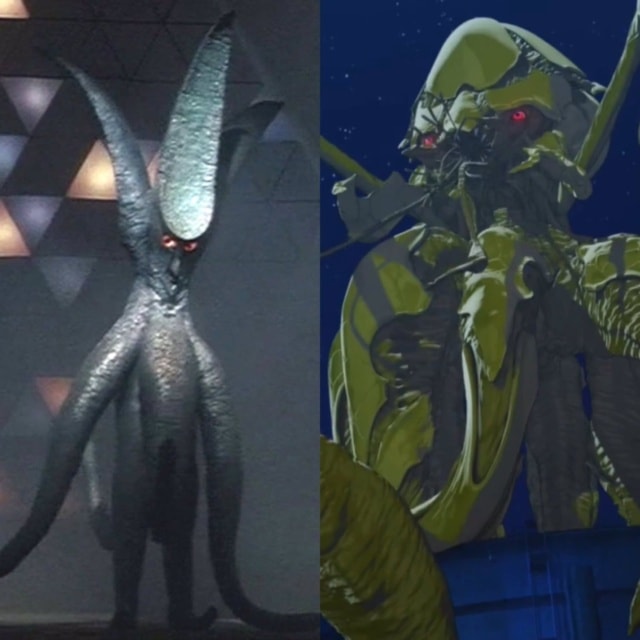
The human characters
As one might expect, the monsters are the real highlight of this series. As is often the case with these movies, the human cast and the rest of the plot are simply backdrop to the giant monster fights.
Gamera Rebirth follows the long-standing Kaiju film tradition of making the human leads endearing, but ultimately forgettable. At least with the kids in this series, they are memorable enough that I can recall their names, which is more than I can say for Godzilla Singular Point, also from Netflix. (While watching that anime, I just thought of the main trio as “the hot guy”, “the other hot guy”, and “the girl.”)
Boco, Joe, Junichi, and Brody have a genuinely endearing dynamic if a bit cliché. The plot point of the kids befriending their bully after saving his life is hackneyed but still charming. The reveal that Junichi is not a boy, just a very masc-presenting girl, has been done to death in anime, but it was still a nice surprise. Up to that point, I’d been convinced that the only woman in this entire show was going to be the characterless Emiko (who ended up being evil).
On that subject, the adult characters are there pretty much for the sole purpose of being bumbling and ineffective. This is unsurprising, as is the case for many shows with child protagonists. There’s the oblivious businessman Tazaki, and the scheming scientist Emiko, neither of whom have a particularly strong presence.
But they’re not the only ones who are underdeveloped characters. Despite being the heart of the show, the kids aren’t particularly well fleshed-out either. We know a little about their history together, but they’re not overly compelling on the whole.
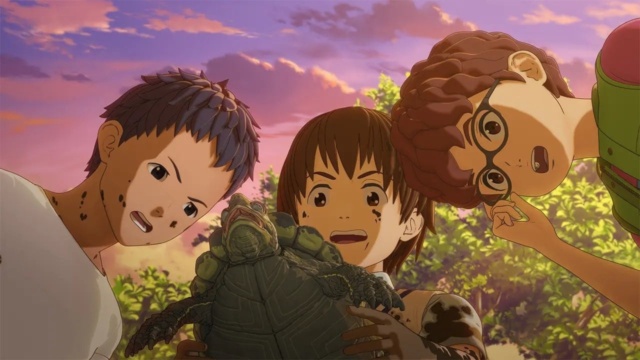
The sci-fi concepts in Gamera: Rebirth
But ultimately, we’re not here for in-depth character studies. We’re here for big monsters and zany science fiction tomfoolery. So, how did the sci-fi of Gamera: Rebirth pan out?
For starters, the setting of an alternate 1989 with a moon colony is really cool but ultimately underused. Despite a few reliable 80’s-isms like arcades, there’s barely anything to indicate we’re in 1989. (In fact, I completely missed that this show was supposed to be set in the 80’s until I googled the plot for a refresher.) Moreover, the show doesn’t really explore its alternate history angle either. We see that this 1989 has a moonbase, and that’s about it. No alternate technologies, no history, nothing.
But the real head-scratcher with this anime is the whole ancient civilization subplot.
Plenty of science fiction, including the kaiju subgenre, has explored the concept of an ancient civilization from before the dawn of humanity, lost to the sands of time. But Rebirth’s ancient civilization is utterly baffling, even by Kaiju standards.
According to the anime, the population was apparently 20 billion before the Kaiju wiped most of them out. Scientists have estimated the maximum capacity of our planet is around 14 billion humans, and even that is stretching it. So how did a couple of Kaiju totally wipe out a civilization of 20 billion? How did any evidence of their existence completely disappear? Did the Eustace Foundation manage to cover it all up? How is the Eustace Foundation the same organization that tried to wipe out humanity 100,000 years ago? Did they just live on and interbreed with the hunter-gatherers? And where on earth have the Kaiju been all this time?
The questions go on and on, and Rebirth answers absolutely none of them.
The animation in Gamera: Rebirth
Well, if the show is nonsense, maybe the animation at least is stylish, trailblazing eye candy?
Um. Well…
I don’t want to disparage the work of the hardworking animators. And as I mentioned, the animation on the Kaiju is genuinely really impressive at times. The designs of the monsters are innovative. The anime breathes new life into these monsters, several of which haven’t appeared since the 60’s.
But it’s clear that that’s where most of the time and money for this show went. The animation for this show is a weird blend of 3D CGI masquerading as 2D drawn anime. This can work for some anime, but in this show’s case, it just looks weird and flat. The human characters in particular suffer from this. They appear emotionless and washed out in many scenes. In one particularly laughable scene, Tazaki talks to the Eustace Foundation leaders via video call. The leaders appear as floating heads on the screen, completely motionless except for their mouths.
Again, I don’t want to attack the creative team. Given the film and television industry’s recent war on animation, Netflix’s continued commitment to putting minimal effort into their side projects, and the fact that this show was probably made on a small budget with a short timeline, I certainly don’t blame anyone involved.
Regardless, the animation in this show is nothing to write home about, and only truly shines during the giant monster fights.
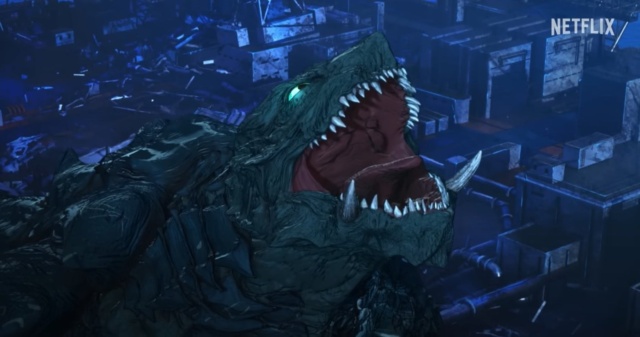
The audience for this Netflix series
What’s most confusing to me about this show, above all else, is just who Netflix thought the target audience would be. The obvious answer is Gamera fans, but that’s a tiny, extremely niche demographic. And even still, the show feels too childish and simplistic, while in other places too adult, to be very appealing to that audience.
Between the animation quality, pretty nonsensical plot, and child protagonists, this show isn’t especially geared toward adult fans of anime, or animation in general. But what about kids? They don’t really care about animation quality or the plot making sense. It would be great for kids to see a show about smart and capable children saving the world.
To which I say, this show is rated TV-14. And not only that, but Joe drops at least two F-bombs. (As a side note, I watched the original Japanese/English subtitled version of the show. I’ve heard Joe drops even more F-bombs in the English dub.)
Also, um. Joe dies. Like, dies dead. (And yes, there’s a post-credits scene that implies he’s still alive off in space somehow—saved by aliens? But what are the odds a kid is going to stick around after the credits for some Netflix show?) Watching Rebirth, I was genuinely shocked by the decision to kill off one of the main characters—an elementary school kid, no less. It was a gutsy move for sure, but one that would likely upset younger audiences (and certainly parents).
Rebirth ends up coming across as slightly too kiddie for hardcore kaiju fans, yet simultaneously too mature for kids.
Final thoughts on Netflix’s Gamera: Rebirth
Ultimately, Gamera: Rebirth feels like squandered potential. As a huge Kaiju fan, I am genuinely thrilled to see this big-ass turtle on my TV again. But that about all this show has going for it: nostalgia, with some cool monster fights and redesigns. I’m of the opinion that campy, schlocky sci-fi can be genuinely substantive and brilliant as well, so it’s a shame to see that this show was just decent.
Moreover, I think there was a huge missed opportunity here to make a Gamera show more marketed towards kids, especially the preteen age group. Gamera protecting children is a big part of his brand, so it’s confusing that Netflix didn’t aim this show at kids more. After being completely absent from the screen for nearly two decades, this anime could have been a really good opportunity to attract a new generation of Gamera fans. But, sadly, it feels like the only people who will watch this show are people who already are hardcore Kaiju lovers.
This is not to say I hated the show. As a hardcore Kaiju fan myself, I genuinely had fun watching it, the monster fights in particular. I think anyone who’s a fan of the genre, especially of Gamera, should give this show a watch. The monsters alone make it worth it for any kaiju-enjoyer. But don’t go into it expecting much more than that.
I had fun with Rebirth, but I can’t say I am hooked, anxiously awaiting more. Given the ending, it’s clear they’re setting up for a season 2. But given the mediocre content, the lukewarm reception, and the extreme niche value of the show, a continuation seems unlikely. It’s a real shame, too. This anime is chock-full of good ideas, ideas that sadly were underdeveloped and half-baked. I’d love to see things more fleshed out if there is a season 2 someday, but I won’t hold my breath.
Gamera: Rebirth is now streaming on Netflix! Have you checked it out yet? What did you think? Let us know on social media @mycosmiccircus or in The Cosmic Circus Discord.

